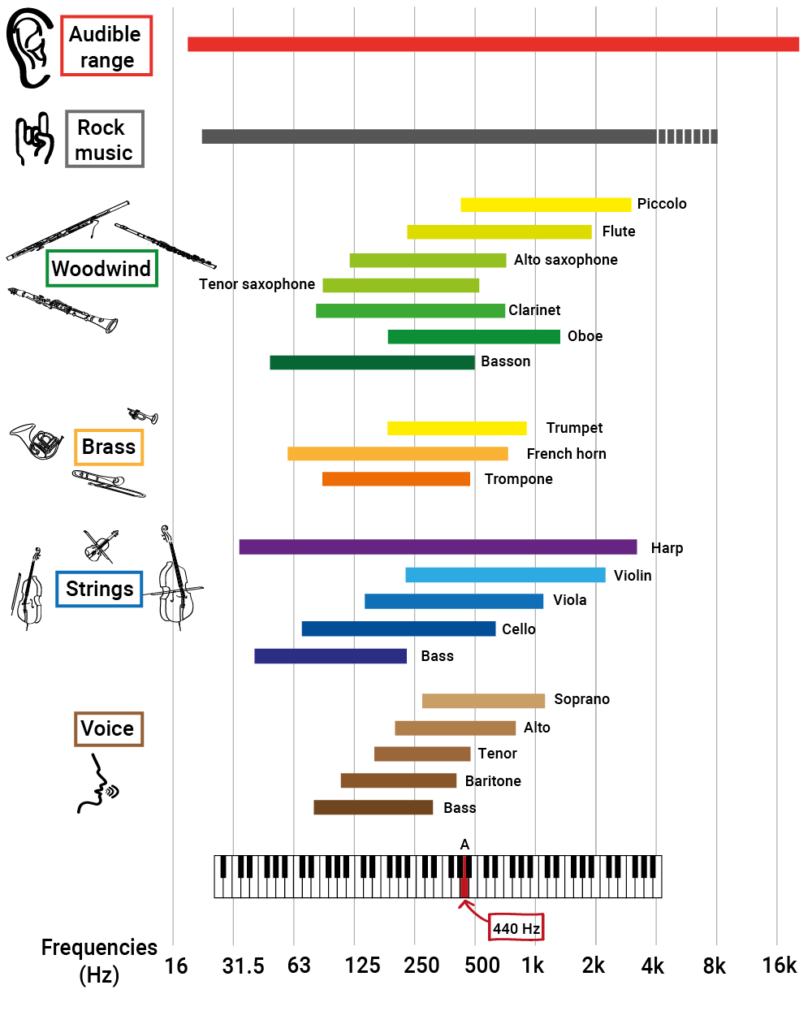
This post is not very long.
It is a complement to the fundamental concepts of sound in which we explained about sound, sound waves, amplitude, wavelengths and frequencies.
Here, we firstly give you some ideas on the dimensions of wavelengths for different frequencies in the air. They are useful to know to better understand sound phenoma like: sound absorption, sound diffusion, sound diffraction and also sound transmission.
Then we have included a graph with examples of spectrum of some instruments and sources. This way, you can visualise the frequencies they can emit.
Enjoy the read!
(See at the end the references used to confirm the concepts)

Do you want to be notified when new posts are published?
Why don’t you subscribe to Atelier Crescendo’s newsletter by clicking here?
Wavelength dimensions
Below we illustrate wavelength dimensions for various frequencies within the audible range for humans.
These examples offer insights into the sizes of wavelengths associated with the sounds/frequencies we can hear.
Note
We have approximated the wavelength values by calculating them under the assumption of air as the propagation medium, at a temperature of 20 degrees Celsius, resulting in a speed of sound at 343 meters per second.
Examples of wavelength dimensions corresponding to different frequencies
20 Hz
17.15 m
50 Hz
6,86 m
100 Hz
3,43 m
500 Hz
69 cm
1000 Hz
34 cm
5000 Hz
6,9 cm
10 kHz
3,4 cm
20 kHz
1,7 cm
Examples of spectrums
Remember from the fundamental concepts of sound, “the natural sounds blend frequencies with varying amplitudes.”
We call spectrum (in physical terms) the range of frequencies a source can emit.
Below we have included a graph with examples of spectrums of some instruments and sources.

